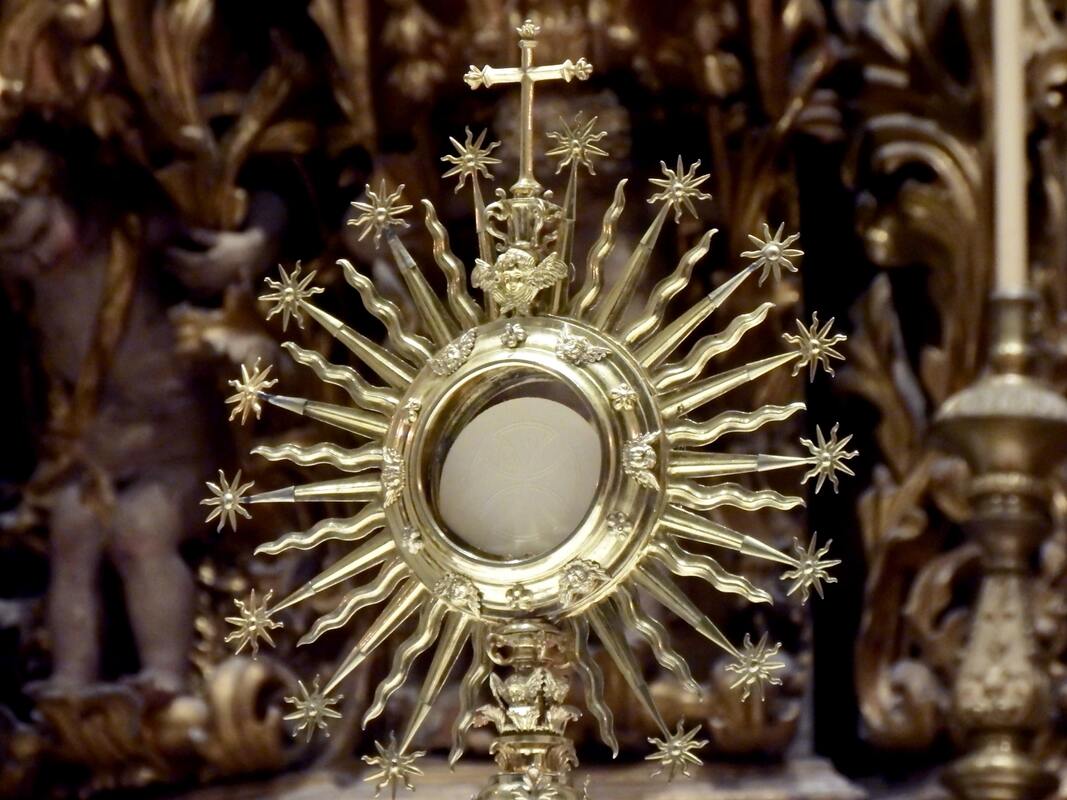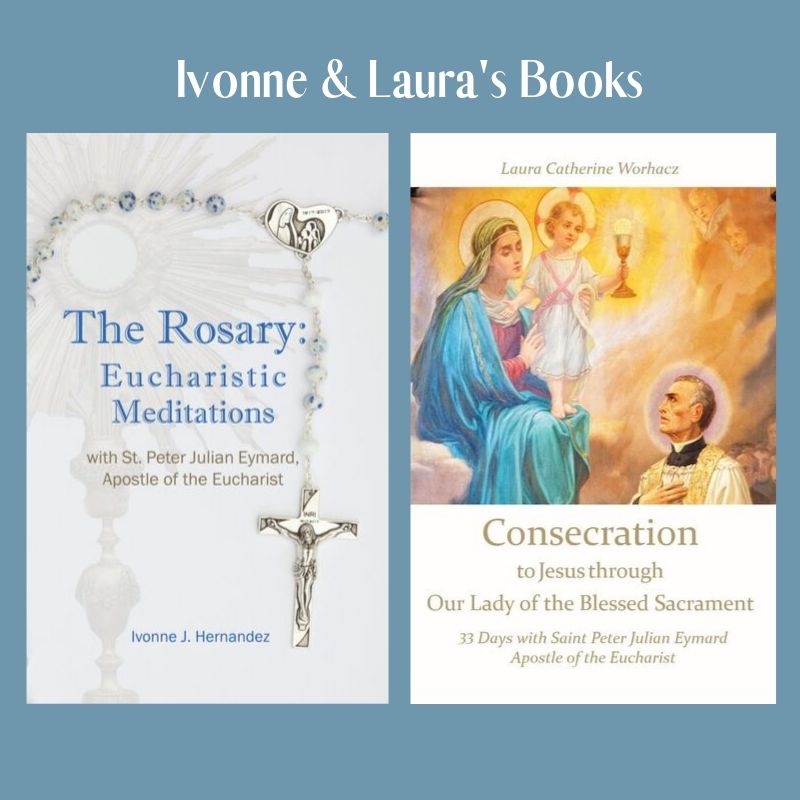ELISHEBA BLOGLaura, Ivonne, and Rick
write about their lives in the Eucharist. |
|
By: Rick Hernandez January 6th is the traditional day for the celebration of the Feast of The Epiphany. This feast is celebrated worldwide with many different customs and traditions, some of which are as big as the traditions of Christmas. But we know that what is really important in every tradition is not the celebration itself but the remarkable wisdom contained within. The word “epiphany” is defined in the dictionary as:
A revealing scene? Picture the Holy Family around the manger. We recognize the scene immediately but, do we understand its essential nature and meaning? The early Church Fathers had much to say about our early Church’s customs and traditions. They speak of the “Epiphanies”, three in total. These three famous gospel scenes are The Visitation of the Magi, The Baptism of Our Lord in the River Jordan, and The Miracle at the Wedding Feast at Cana. These scenes are so easily recognized by the faithful, but we have to dig deeper to understand their essential nature and meaning. What do we recognize? What do we testify to? The first and most commonly recognized Epiphany scene is The Visitation of the Magi. For us, Eucharistic people, we can identify this scene as one of the first two public adorations of the Christ Jesus, and it speaks to us about recognition. It is written that the local shepherds, after being told by an angel, went to visit the manger and recognized the Christ Jesus. “Then the shepherds returned, glorifying and praising God for all they had heard and seen, just as it had been told to them” (Luke 2:16-20). Then the Magi arrived, and from their recognition, they “prostrated themselves and did him homage. Then they opened their treasures and offered him gifts of gold, frankincense, and myrrh” (Matthew 2:1-12). Do we recognize our Lord, ever-present in our lives? Our Lord’s presence in the Eucharist is as real as the Child Jesus on that manger so long ago. When we prostrate ourselves, what is our offering? The second Epiphany scene is The Baptism of our Lord in the River Jordan, and it speaks to us about initiation. The Baptism of Our Lord traditionally marks the end of the Christmas liturgical season. In this scene, we encounter Saint John the Baptist, practicing the baptism of water, also called the baptism of repentance. John preaches, “I am baptizing you with water, but one mightier than I is coming. I am not worthy to loosen the thongs of his sandals. He will baptize you with the Holy Spirit and fire” (Luke 3:16). Then our Lord walks by the river and humbly asks to be baptized. Baptism is one of the Sacraments of Initiation. After His baptism, the whole of the Holy Trinity is present, revealed for us to see, “…and behold, the heavens were opened, and he saw the Spirit of God descending like a dove coming upon him. And a voice came from the heavens, saying, ‘This is my beloved Son, with whom I am well pleased’” (Mark 3:16-17). Do we recognize our Lord Jesus guiding us by example into being initiated into the faith? Out of this recognition, we receive a desire for initiation, for us and for our children. Are we aware of the Holy Trinity working in our lives? Do we acknowledge that perfect union, that perfect love? For those of us already initiated, we are invited to meditate upon this gift of Faith, Hope, and Charity. The third Epiphany scene is The Wedding Feast at Cana, the first public miracle of our Lord, and it speaks to us about confirmation. In this scene, our Mother Mary tells Jesus, “…They have no wine” (John 2:3). Our Lord Jesus is moved into action by His love for His mother, Mary, and performs His first sign, turning water into wine. Thus, by His blessing, marriage is confirmed as a sacrament. “Jesus did this as the beginning of his signs in Cana in Galilee, and so revealed his glory, and his disciples began to believe in him” (John 2:11). His disciples already recognized Christ Jesus from their earlier experiences, but like us, needed a reinforcement, a confirmation of what was already professed. Our Lord Jesus performed this sign, in public, because of love, and for this, the disciples could not be anything other than convicted in their hearts. Looking and meditating upon this scene, we are thus invited to confirm our faith yet again. We see love, obedience, humility, truth, and awe. It is an amazing gift of recognition. Our Lord is precisely who He says He is. Saint Peter Julian Eymard wrote long ago: “Look at Magdalene: one word from Jesus and she recognizes Him. He acts in the same way in the Blessed Sacrament: He says one word only, but it rings in our very hearts: “It is I!….” We sense His Presence; we believe in it more firmly than if we were to see Him with bodily eyes.” The “Epiphanies period” is an opportunity to work on our recognition skills, that we may recognize Christ and confirm our initiation into His Faith and His Church. We keep our eyes and hearts open to Him, and we become convicted in His love for us. It is all the “Theophany,” meaning: the manifestation of our God, both Human and Divine. He is here, present and waiting for us... “Oh, let us come and adore Him” (Psalm 95:6). Let us pray: Lord, open our eyes so we can see. Help us recognize You, initiate us into Your love and confirm our faith. Convict our hearts in You. Amen.
0 Comments
Your comment will be posted after it is approved.
Leave a Reply. |
Categories
All
FOLLOW US ON SOCIAL MEDIA:
AuthorsWe are Ivonne J. Hernandez, Rick Hernandez and Laura Worhacz, Lay Associates of the Congregation of the Blessed Sacrament, and brothers and sisters in Christ. |
Copyright © 2024 Elisheba House Inc.
Elisheba House is a 501(c)(3) non-profit organization. Federal Tax ID Number 84-1894146
Florida registration for Solicitations of Contributions #CH71652
A COPY OF THE OFFICIAL REGISTRATION AND FINANCIAL INFORMATION MAY BE OBTAINED FROM THE DIVISION OF CONSUMER SERVICES BY CALLING TOLL-FREE (800-435-7352) WITHIN THE STATE. REGISTRATION DOES NOT IMPLY ENDORSEMENT, APPROVAL, OR RECOMMENDATION BY THE STATE.
Florida registration for Solicitations of Contributions #CH71652
A COPY OF THE OFFICIAL REGISTRATION AND FINANCIAL INFORMATION MAY BE OBTAINED FROM THE DIVISION OF CONSUMER SERVICES BY CALLING TOLL-FREE (800-435-7352) WITHIN THE STATE. REGISTRATION DOES NOT IMPLY ENDORSEMENT, APPROVAL, OR RECOMMENDATION BY THE STATE.




 RSS Feed
RSS Feed